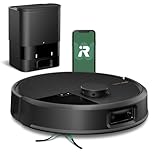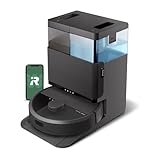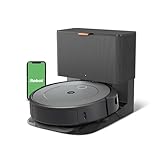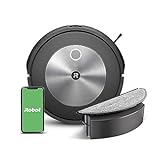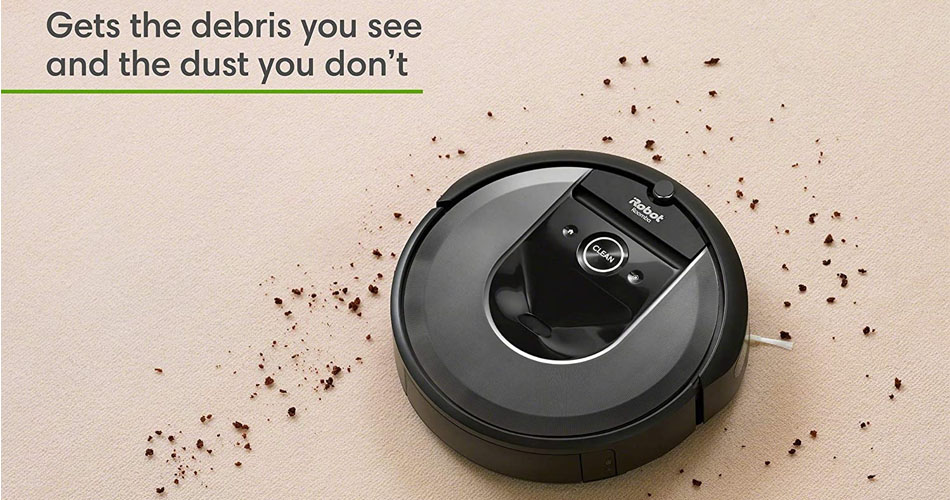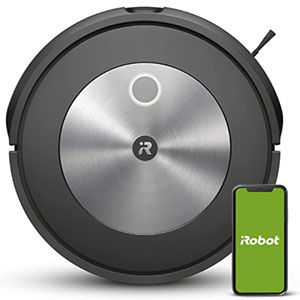Roomba i7 vs i7+ Comparison Review
 One of the landmark innovations from iRobot is the self-emptying bin technology, which was introduced with the I series that includes Roomba i7 (7150) and Roomba i7+ (7550).
One of the landmark innovations from iRobot is the self-emptying bin technology, which was introduced with the I series that includes Roomba i7 (7150) and Roomba i7+ (7550).
These two models have been very confusing, and today, in this Roomba i7 vs i7+ comparison review, we have explained the differences in detail and gave our recommendations on which is the best choice.
Roomba Cyber Monday 2025
Roomba i7+ (7550)
The Roomba i7+ is the ceiling model and a complete package if you are keen on a Roomba that has all the accessories needed for automatic self-emptying.
But as the plus model, expect to pay more for it.
Comparison Table
Roomba i7 vs i7+ Face to Face Comparison
In this segment, we will compare these two Roombas by looking at their main features and how they compare. So without further ado, let’s get to business.
Design and Aesthetics
As a buyer, you should be able to tell the difference between these two models from the aesthetics. It’s also important to buy a model with a low profile design to ensure it creeps under the sofas, kickstands, and other low profile furniture where most dirt hides.
As far as the design goes, the two models are the same. They have a 13.34-inches diameter and stand at 3.63-inches.
But overall, the i7+ is much bigger now that it includes a CleanBase unit, which is 19-inches high and 12.2-inches wide.
As for the aesthetics, they have been finished in black with some glossy accents. The top interface has three buttons; a large CLEAN button at the center and two smaller Spot mode and Home buttons on either side of the clean button.
Cleaning Performance
Which Roomba between the two offers the best cleaning performance? That’s what we are going to find out in this segment. We will also be sharing our exclusive cleaning test results.
Cleaning Orientation
Roomba i7 and i7+ have been designed to sweep and vacuum only, so don’t expect them to have any extras like mopping. Even the premium Roomba at the moment, the S9 and S9+, don’t integrate mopping functions as we have seen in other brands such as Roborock and ECOVACS.
When it comes to application, the two are also similar. You can rely on them to clean bare floors (hardwood, tile, linoleum, vinyl, etc.) and low to medium pile carpets. They are also good at picking up pet hair (short and long pet hairs) without any problem.
Suction Power
A good robot vacuum should have high suction power and preferably dynamic suction levels.
These two robot vacuums are also similar when it comes to suction power. They come equipped with the older generation motor, the same one in the Roomba 800 series, E5/E6, and 960.
This is a single-speed motor that delivers an average of 900pa, enough to vacuum bare floors and low to medium pile carpets.
However, on a high pile carpet, shag, and rugs, it gets overwhelmed. If you want a reliable Roomba for carpets, check out the Roomba 980 or the new S9/S9+, which have dedicated carpet modes.
Cleaning Head
There are three features to look out for when assessing a Roomba’s cleaning head; adjustability, the primary brushroll, and the secondary brush.
Roomba i7 and i7+ are similar here. The two models have self-adjusting cleaning heads, which make sure there is sufficient contact with the surface.
The brush system is based on the Roomba AeroForce technology, which consists of a dual multisurface rubberized brush. There is a brush for agitating dirt and another one for picking up the dirt. The primary brush is complemented by a sweeping brush on one side of the robot vacuum.
Filtration
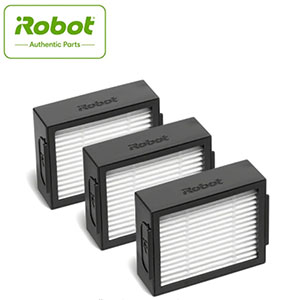
Roomba i7 and i7+ both come with high-efficiency filters, which are not HEPA grade but will still get the job done. Unlike the other AeroForce filters, this one is a bit smaller in size but packs the same efficiency.
Regarding the bin size, the duo is also similar. They feature a 0.3L bin and have a full bin indicator.
Automatic Self-Emptying
The talk of the town in the robot vacuums industry is the self-emptying bin technology. This is a system that makes robot vacuums completely robotic.
The Roomba i7 and i7+ both work with the iRobot self-emptying technology. It empties the bin automatically when the Roomba docks. That means users don’t have to worry about manually emptying the bin now and then as the unit can hold a month’s dirt.
While both Roombas work with self-emptying technology, there is a difference in terms of the accessories included. Roomba i7 doesn’t come with a CleanBase unit while the i7+ tags along with this accessory.
Battery and Runtime
The battery of the robot vacuums determines their runtime and, consequently, the floor area that they can clean on a single charge. It’s also important to assess aspects such as power management and life cycle.
Roomba i7 and i7+ are very similar here. They both feature 1800mAh lithium-ion batteries, which have been optimized to run for 75 minutes and recharge for 2-3 hours.
When it comes to power management, both vacuums have the auto-recharge and resume function, which implies that they will dock automatically to recharge, and once they are fully charged, they will resume cleaning without being prompted further. As far as the life cycle goes, the battery lasts for 12 – 18 months, depending on usage.
Navigation and Mapping
While the battery determines the area a robot vacuum will clean, the navigation and mapping system dictates where the robot will reach, and the cleaning efficiency. Navigation is all about how the robot finds its way around your house while mapping revolves around how the robot scans and plans the cleaning pattern.
Roomba i7 and i7+ have the same navigation and mapping systems. They both come with iAdapt 3.0 navigation, a technology that relies on VSLAM (Visual Simultaneous Localization and Mapping) algorithm. There is a set of obstacle detection sensors and cliff detection sensors that work hand in hand with a real-time camera. The duo is very accurate in high traffic rooms and homes with multiple rooms compared to Roombas that rely on SLAM algorithms only.
When it comes to mapping, Roomba i7 and i7+ have an intelligent floor scanning and mapping system dubbed Imprint™ Smart Mapping. This addition enables the robot to identify the different rooms and store maps. You can tell the Roomba to clean the kitchen only instead of the entire house. Last is regarding containment, and both Roombas work with Virtual Walls.
Smart Features and Convenience
In this smart home revolution, you definitely want a smart Roomba that can sync with other devices, including your smartphone. Both Roomba i7 and i7+ are smart and have the same features and functionality.
You can operate them right from your smartphone courtesy of the iRobot HOME app for Android and iOS devices. Besides smartphone operation, these two Roombas can integrate with voice assistants – talk of Alexa and Google Assistant.
When it comes to convenience, the two have the schedule function. As the name suggests, the scheduling function allows homeowners to program the robot vacuum to clean at specific times. You can schedule them for seven days straight.
Our Verdict: Roomba i7 vs. i7+
As mentioned earlier, these two Roombas are very similar. It’s only that the plus model comes with the CleanBase unit. So, the big question is, should you buy the Roomba i7 or the i7+.
verdictIf you are looking for the convenience of automatic self-emptying, get the Roomba i7+ but know that it is more expensive. If you are on a budget, you can get the cheaper i7 and upgrade by buying the CleanBase unit later on. There are several other robot vacuums with self-emptying, which can be great alternatives to the Roomba I series. Some of the big names include Roomba S9/S9+ and Shark IQ Robot 101AE.




